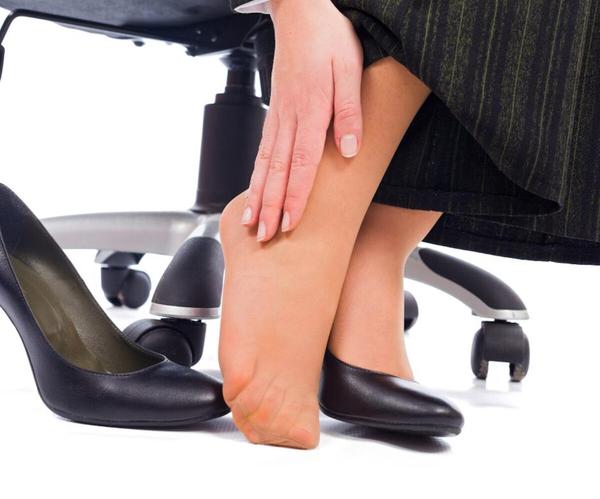
A few days ago, news broke that an employee had been fired from her company for refusing to wear 3-inch heels during her eight-hour workday.
Beyond other aesthetic aspects and sexual discrimination, since this type of footwear is only required for women, from a health point of view, the General Council of Official Colleges of Podiatrists recalls the use of this type of footwear is totally inadvisable for health. And more, when we talk about very long working hours.
It may interest you: Calluses on the feet: prevention, causes and treatment
Its "aesthetic benefits" and "empowerment" have associated side effects. Because wearing very high heels affects walking.
How? Well, it produces a blockage of the ankle joint in a plantar flexion, which is increased proportionally with the height of the heel, makes the upper joints, both the knee and the hip, have to make more movement and, consequently, a swaying of the hips which is antiphysiological.
The ideal for the position of the metatarsals is a moderate heel, between one and four centimeters.

It allows an angle with respect to the ground that allows the support of the most anatomically prepared part to step on, with the help of the fibrocartilaginous elements and protected by the best shock absorber ever designed: the plantar fat.
Problems appear the moment we walk on heels that are more than two inches high.
Because all this wise body design falls apart.
We start to load more than 75% of our weight on the most sensitive part of our metatarsals, the cartilage, and we subject the plantar plates of our joints to "barbaric" pressure, which can generate inflammation, fissures and, not infrequently, their breakage.
In addition, it should be noted that, associated with the heel, the stilettos generate a compression of the digital segments with the consequent short or long-term skin injuries, such as wounds, calluses, crow's eyes, ingrown nails or subungual exostoses.
But it is not necessary to give up wearing stylish shoes.
From the General Council of Official Colleges of Podiatrists they explain that these unwanted effects can be reduced by following some guidelines when choosing footwear:
The General Council of Podiatric Associations does not intend to demonize heels.
The secret is in the use and not in the abuse: moderate use can favor the self-esteem of those who wear them and abuse will ruin their feet.
Experts underline the importance of taking care of the feet in the professional field.
Especially for workers in sectors such as construction or industry.
The Council of Podiatric Associations points out the importance of wearing work or safety footwear, an element that is part of the individual protection equipment (PPE) of any worker, and of the current occupational safety regulations.
According to the Council of Podiatrists, the purpose of safety footwear is to protect the foot and especially fingers and nails and, therefore, the human body from the possible risks involved in carrying out a work activity.
Specifically, if the work activity involves standing for a long period of time, either in a static or moving position, the general secretary points out that problems in the joints of the feet, knees, hips and spine are usually common, "so that work shoes can be a good prevention method».
The General Council specifies the aspects that must be taken into account when choosing the right type of shoe for each user:
Regarding footwear specifications, the CGCOP advises: